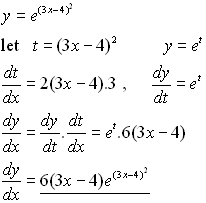

At this point, we see that we get different values, depending on whether we consider the limit $\epsilon \to 0_+$ or $\epsilon \to 0_-$. We now define the distribution $\log x $ to be the limit of this distribution as $\epsilon$ tends to zero. Thus we define, for non-zero $\epsilon $, the distribution $\log(x+i\epsilon)$ to be $\log|x|+i \arctan \frac \epsilon x$ (i.e., we are using the principal branch of the complex logarithm). In this case we resort to the complex logarithm. The case of the distribution $\log x$ is rather more subtle.

It is then rather natural to define this derivative to be the distribution $\frac 1 x$. More importantly the same is true for its derivative in the distributional sense. In these two cases, we have to proceed in a more delicate manner.įirstly, note that the function $\log |x|$ is locally integrable and so is a distribution. Note that the problem lies in the fact that while the function $\log |x|$, being locally integrable, determines a distribution, the same is not true a priori for $\frac 1 x$ and $\log x $. The dream theorem of every freshman calculus student holds-if a sequence of distributions converges, then the sequence obtained by differentiating term by term also converges. In fact, local $L^1$ convergence suffices. For our purposes, it suffices to know that if a sequence of continuous functions converges uniformly on compacts, then it converges in the sense of distributions. There is a notion of convergence for distributions.

Every continuous function on the reals, better, every locally integrable function, determines in a natural way a distribution. In fact it is rather disquieting that this is often not the case, since this task can be achieved by elementary methods which have been on record in the primary and secondary literature for at least 50 years.įor the example in question (and, indeed, for most of the examples in such forums), one need only be cognisant of the following simple facts about distributions. However, since this is a mathematical forum, one does have the right to expect that the final formulation of the solution conforms to the usual standards of mathematical rigour (as is implied in the OP). As a preliminary remark, it is not surprising that theoretical physicists are guided by their physical intuition and not by mathematical rigour in dealing with such questions and it is perfectly acceptable for mathematicians to proceed in the same way in formulating such conjectures.

(notabene not $\log |x| $) as distributions. The basic problem lies in the interpretation of the functions $\frac 1 x$ and $\log x$ Since they are often treated in a rather cavalier fashion, I would like to attempt to answer this query in some detail. Figure 2.Questions about distributions, usually involving the $\delta$ distribution ("function"), are of frequent occurrence on this and related sites.


 0 kommentar(er)
0 kommentar(er)
